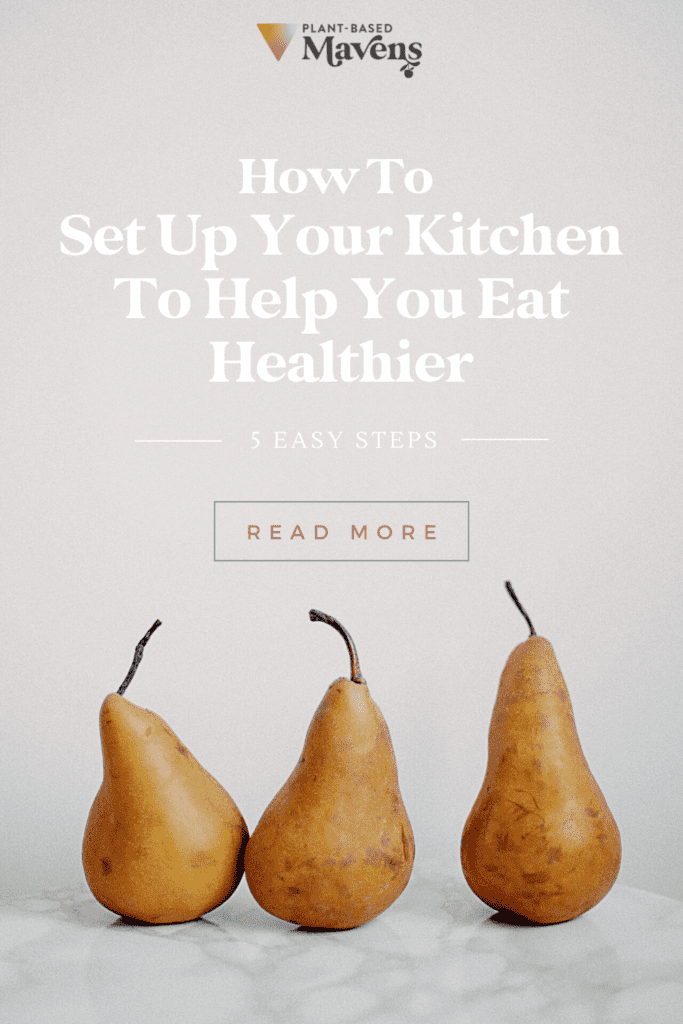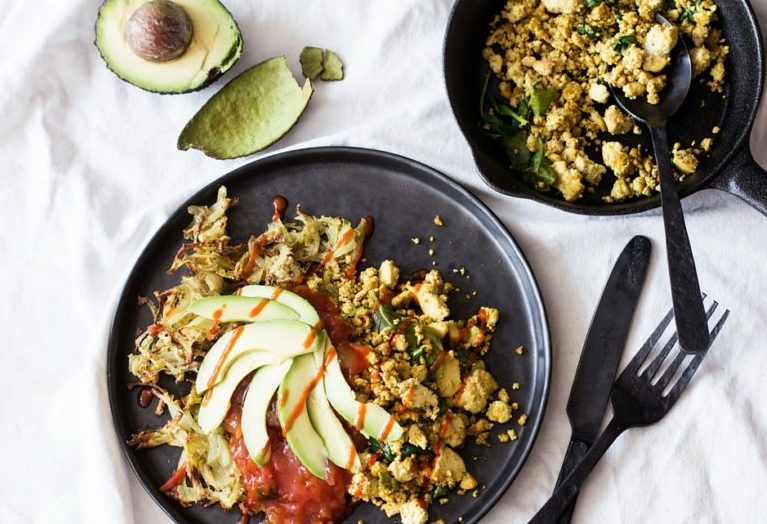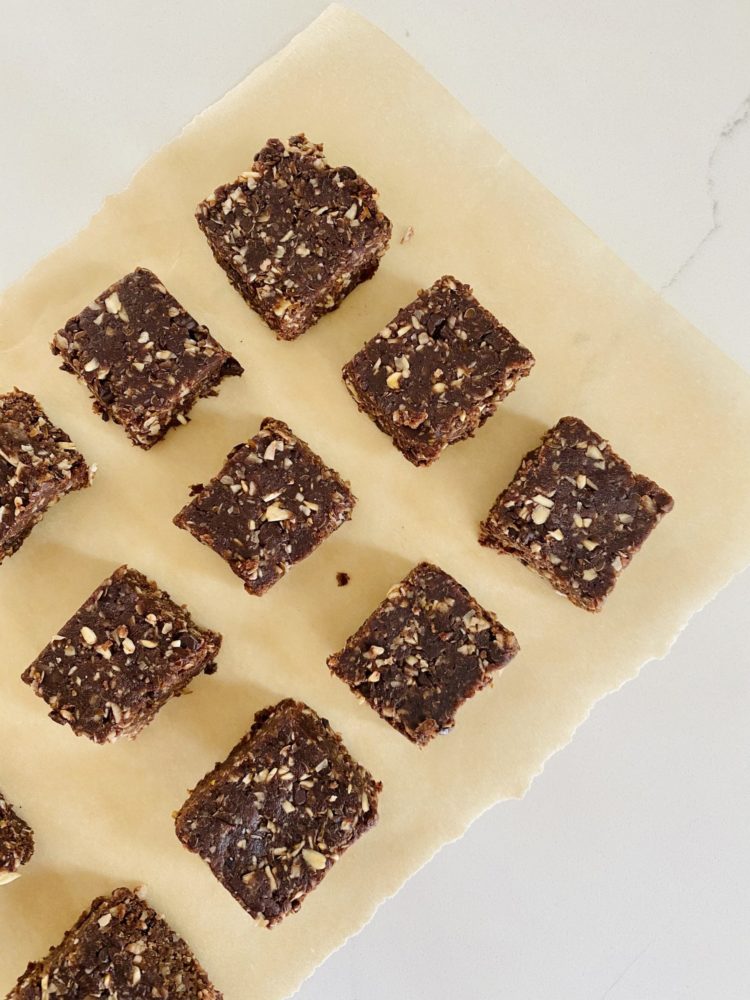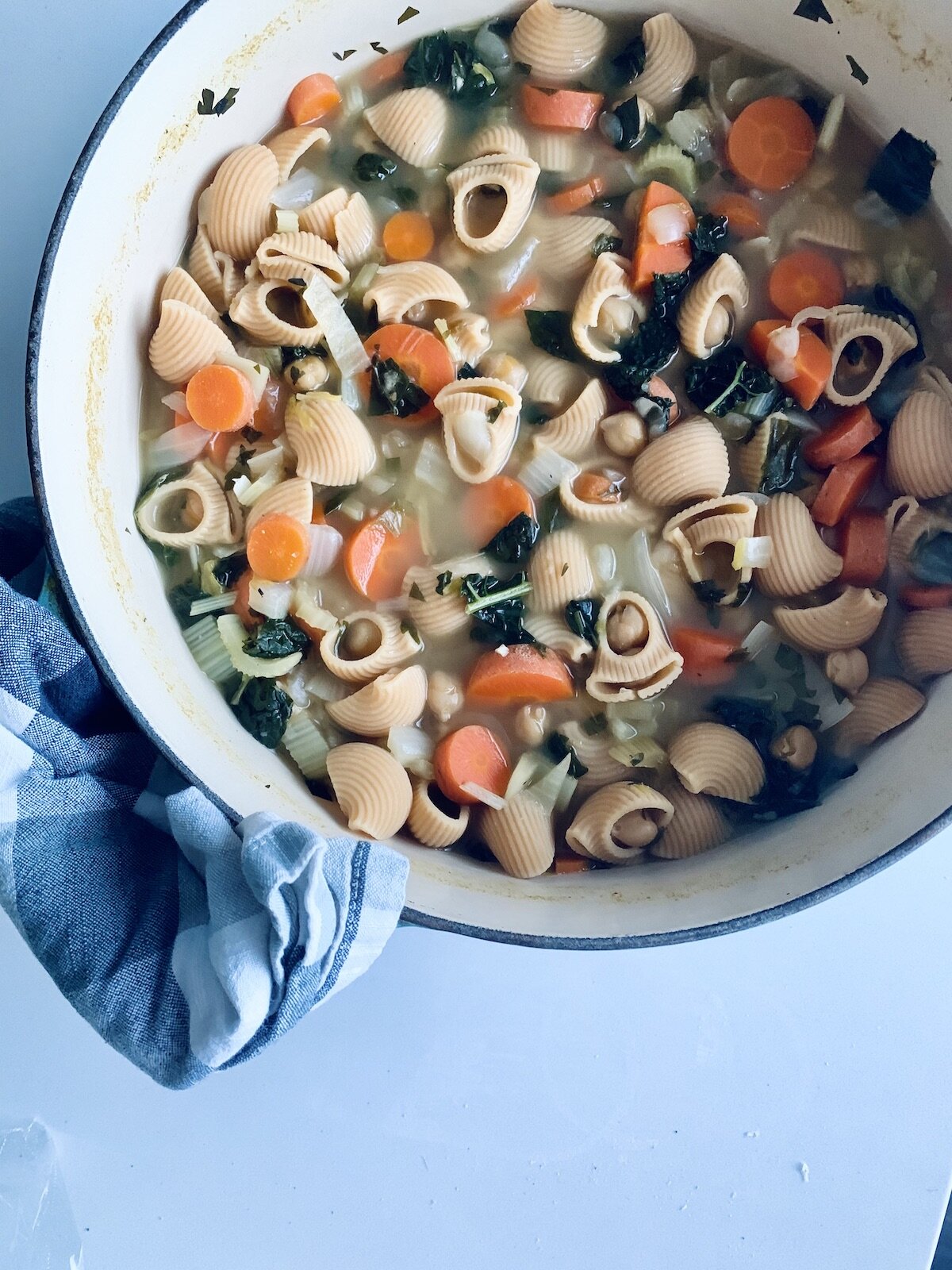Wouldn’t it be amazing if your kitchen actually helped you eat better? Today, you’ll learn how to do just that – how to set up your kitchen for healthy eating. Your ability to create desirable habits is heavily influence by your surroundings, and your kitchen is no exception.

Most of the actions we take each day, everything from how we wake up in the morning to the way we get ready for bed at night, are habits. They are actions we take, in about the same way, day after day. In other words, our habits are the building blocks of our lives. And this means habits are powerful.
“Life is a lagging measure of your habits.”
– James Clear
Establishing habits, like most things, is largely an inside job rooted in the beliefs we hold about the world and ourselves. BUT external factors like our immediate surroundings also play an undeniable role in shaping our actions. This includes the way we eat. And the kitchen is ground zero for our at-home food habits.
Does your kitchen reflect the types of eating habits you wish to cultivate? If you answered “no” or “I’m not sure,” I’ve got you covered. Here are five ways you can set up your kitchen for healthy eating.
5 Way To Set Up Your Kitchen For Healthy Eating Habits
1. Make it a positive place.
I am an advocate for beginning every conversation about food with a conversation about bolstering mental wellbeing. If you are reading this, then you’re likely seeking a more peaceful relationship with food, and that can only happen after you’ve cultivated a calm, connected mental space.
How does this relate to your kitchen? Think about creating a cooking and eating space that you actually enjoy being in – one that allows you to feel grounded and present. Perhaps that means clearing out distracting clutter and tucking items away in drawers and cabinets. Maybe it means adding a cheerful plant or vase of flowers or playing your favorite music while you’re in there. Whatever peace and positivity mean to you, let that be reflected in your cooking space.
2. Showcase the foods you want to eat more often.
How often have you loaded up your cart with fresh, ripe produce, stocked it away in your kitchen, patted yourself on the back…. and then completely forgot it existed until you detected a funky smell emanating from the fridge? Been there!
The best way to ensure you gobble up that nourishing food is to make its presence known. As much as I work with clients to help them rely on internal cues to decide what, when, and how much to eat, there will always be some level of external cues at play. And visual cues in particular can be powerful.
Try placing a fruit bowl front and center on the counter for easy grab-and-go snacking. Store bulk beans, whole grains, nuts, and seeds in clear containers so you’re sure to see them. And this is my favorite strategy of all: in the refrigerator, move produce OUT of the bins (what I like to call the produce graveyard) and onto the shelves at eye-level, and use those hidden bins to store fun foods. If one of your intentions is to stay hydrated, add citrus or cucumber slices into a clear water pitcher to make plain water more visually enticing.
3. Keep it simple.
As a cooking newbie, it’s easy to get lost down a rabbit hole of gadgets and doodads. I believe that cooking and feeding yourself well can be quite simple. In fact, a simple kitchen can make healthy cooking and eating easier. Less clutter, less equipment to clean, more resources to invest in a few high-quality basics (download my kitchen essentials guide to see my recommendations for stocking your kitchen).
One of the best things you can do to set up your kitchen for healthy eating is to clear out equipment you never use and items you have in multiples. Do you really need three sets of measuring cups? And that avocado slicer – won’t a simple knife do the trick?
Simplifying also applies to food. Clean out expired items and those random items that you have no intention of ever eating but feel bad throwing out. Find a food pantry to donate appropriate non-perishables to.
By downsizing the items in your kitchen, you shine a light on all the equipment and goodies that align with the healthy habits you are cultivating.
4. Keep your menu plan visible.
If planning ahead is part of your routine, keep your menu for the week somewhere visible in your kitchen. It will remind you that you’ve set yourself up for less stress and help cue you on little prep tasks that can be completed throughout the day leading up to dinnertime (chop carrots, steam potatoes, soak cashews, etc.).
Looking for meal plan ideas? Browse the PBM recipe page and download my free 7 Day Meal Plan Guide.
5. Stock it with your favorites.
Pleasure and enjoyment are cornerstones of healthy eating, so we are much more likely to utilize our kitchens (and feel at peace in them) when they are well-stocked with our favorite foods. Sometimes our kitchens are poorly stocked because we aren’t prioritizing time for planning and shopping (which are acts of self-care!). Sometimes they are poorly stocked because we are denying ourselves foods we enjoy. For example, say you love hummus and crackers, but you bought hummus and carrot sticks instead because you think crackers are “bad” for you. The carrots wilt away in the fridge and the hummus goes untouched. If you had crackers, on the other hand, you’d probably be eating hummus for a snack every day!
Make a list of your favorite healthful foods and the ways you like to enjoy them. Then make sure you have those ingredients stocked in your kitchen.
For many, the kitchen feels like a dreadful place where all the food demons lurk. But it doesn’t have to be that way. With these five strategies, your kitchen will transform into a self-care sanctuary that supports your healthy habits.


